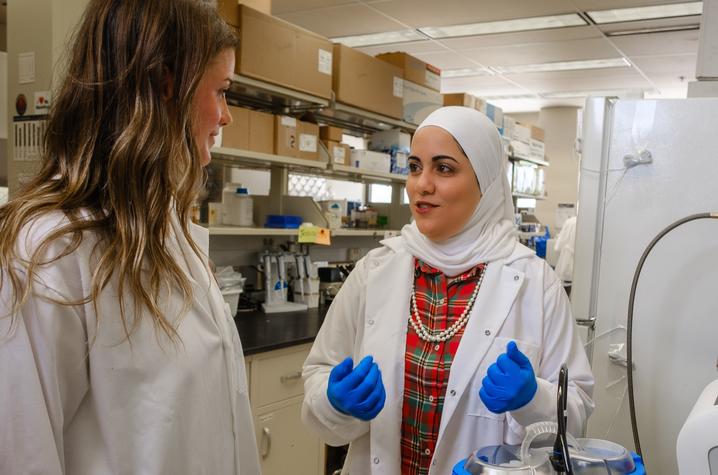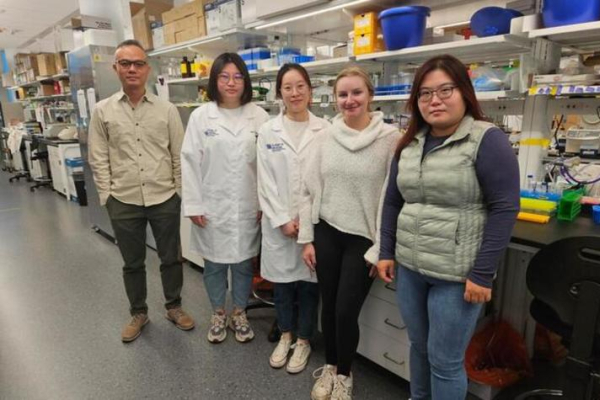UK study on antibiotic resistance in cattle-associated bacteria shows potential impact on One Health

Antibiotics have long served as a foundation of modern veterinary medicine, especially in livestock animals. Yet a growing public health threat looms as bacteria evolve to evade these vital drugs.
A new study from the University of Kentucky’s Martin-Gatton College of Agriculture, Food and Environment titled “Multidrug Resistance and Virulence Traits of Salmonella enterica Isolated from Cattle: Genotypic and Phenotypic Insights” reveals that antibiotic resistance in cattle-associated bacteria could have far-reaching implications for human, animal and environmental health. This study was published in the journal Antibiotics.
Addressing this challenge requires a One Health approach, which integrates the health of people, animals and ecosystems into a unified framework. This vision is also at the heart of the One Health Center Initiative, one of The Bill Gatton Foundation Grand Challenges, which advances multidisciplinary solutions through education, research and extension. Yosra Helmy, associate professor of One Health and Infectious Diseases in the Department of Veterinary Science and One Health Center researcher, led the study in collaboration with lead veterinary microbiology diagnostician Erdal Erol.
The study was supported by UK’s Center for Pharmaceutical Research and Innovation Center of Biomedical Research Excellence for Translational Chemical Biology, the UK Center for Clinical and Translational Sciences and through UK’s Igniting Research Collaborations program.
Researchers uncovered Salmonella enterica strains isolated from cattle that were not only resistant to multiple classes of antibiotics but also carried virulence traits enhancing their ability to persist, spread and evade control measures.
“UK researchers are now working to better understand the mechanisms behind these traits, to develop new strategies to halt their transmission and identify more effective treatments,” Helmy said. “Antibiotic resistance isn’t just a clinical problem; it’s an ecological one. Our findings highlight that the farm, food supply and environment are all part of the same resistance puzzle. What happens in animals does not stay in animals.”
Impact on One Health
Grounded in a One Health framework, the study emphasizes that protecting public health requires coordinated action across interdependent sectors.
“One Health is not just a concept; it’s a necessity,” Helmy said. “Safeguarding public health demands collaboration at the intersection of veterinary science, human medicine, agriculture and environmental management.”
Over two years, samples from more than 1,000 necropsied cattle were tested in this study, and a small, but important share carried bacteria resistant to at least three different classes of antibiotics. Several strains showed resistance to carbapenems, powerful antibiotics reserved for life-threatening human infections.
Although Salmonella enterica was the main focus of the study, many findings point to a broader problem that could affect public health, veterinary care and the environment.
“The detection of carbapenem-resistant genes in animal isolates is particularly worrisome,” Helmy said. “These are drugs we use only when others fail, and their effectiveness is now under threat from resistance traits emerging outside hospital walls.”
Beyond resistance, the study also revealed that these Salmonella enterica strains possessed genes related to biofilm formation, adhesion and motility, factors that enable bacteria to survive disinfection, cling to surfaces and spread between environments. This means they can persist on farm equipment, evade sanitation in processing plants and travel through soil or water runoff.
“These bacteria are stealthy and resilient,” Helmy said. “Biofilms are like a biological armor, once these pathogens form them, they’re incredibly hard to eliminate.”
Helmy emphasized that resistant bacteria emerging in livestock are not isolated threats, but they can move through ecosystems and eventually affect people.
Helmy said the research team stressed that rapid, farm-side diagnostic tests can help veterinarians target the right drug quickly, and stricter sanitation and waste management plans can block escape routes that let resistant germs flow from barns to waterways.
The research team has begun sequencing the full genomes of the most worrisome strains to map how resistance genes spread among animals, wildlife, environment and human populations in the region.
“This work underscores why keeping antibiotics effective demands cooperation across medicine, agriculture and environmental science,” Helmy said. “While Salmonella remains a familiar headline in food safety discussions, it serves here as a clear example of how drug-defiant microbes can emerge quietly in one corner of the food chain and threaten the rest of it. By monitoring these pathogens and tightening control measures now, the One Health community hopes to safeguard treatments that people, pets and livestock all depend on.”
Research reported in this publication was supported by the National Institute of General Medical Sciences of the National Institutes of Health under Award Number P20GM130456 and the National Center for Advancing Translational Sciences under Cooperative Agreement Number KL2TR001996. The content is solely the responsibility of the authors and does not necessarily represent the official views of the National Institutes of Health.
University of Kentucky alum and former trustee Carol Martin “Bill” Gatton bestowed a transformational $100 million gift to the college through The Bill Gatton Foundation. It is the largest gift to the university in its history.
Four Pillars of The Bill Gatton Foundation’s gift are (1) Scholarships and other initiatives for Student Success, (2) Companion Animal Program, (3) 21st Century Capital Projects and New Initiatives Fund and (4) Faculty Research and Innovation/Research Challenge Trust Fund Program.

